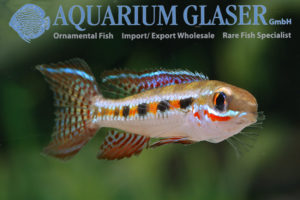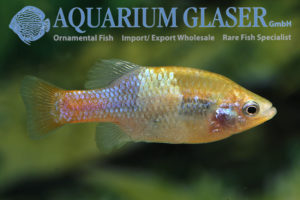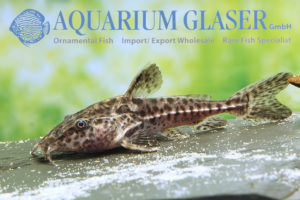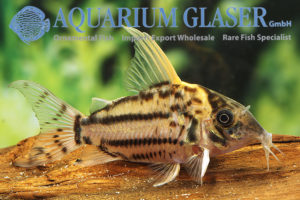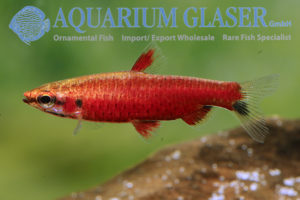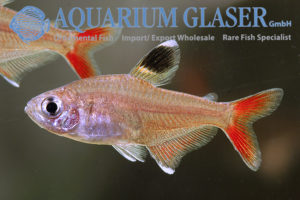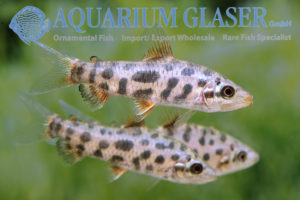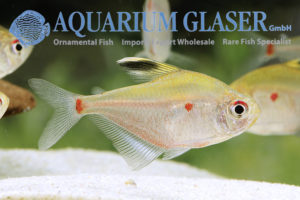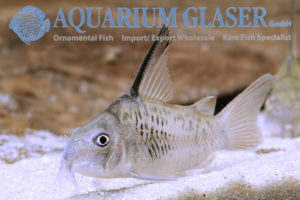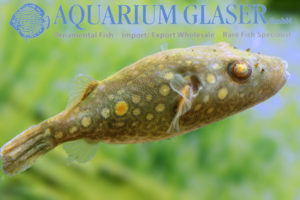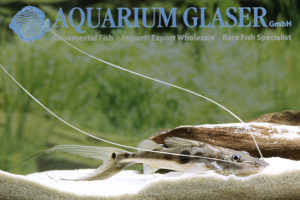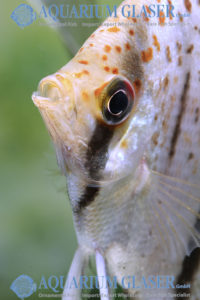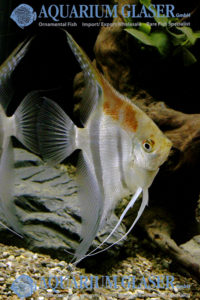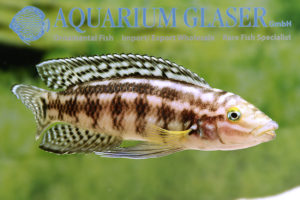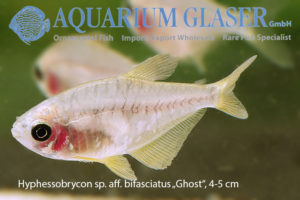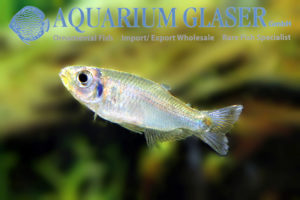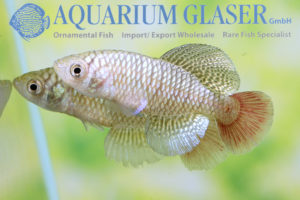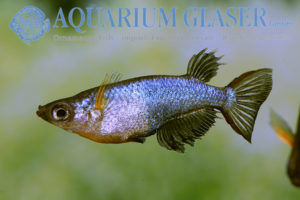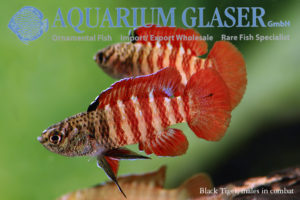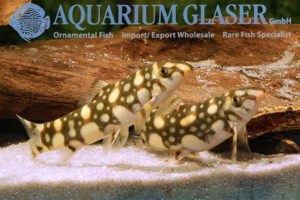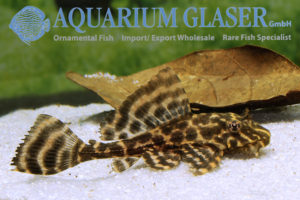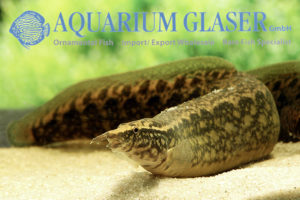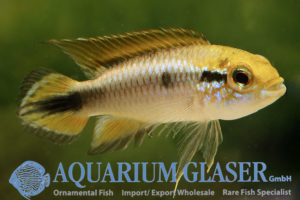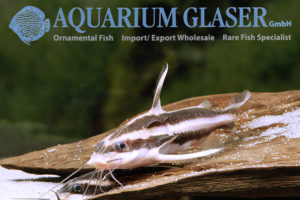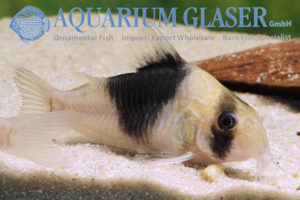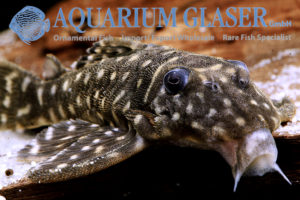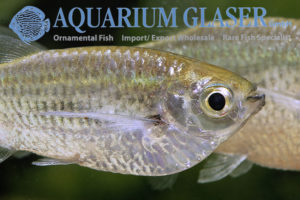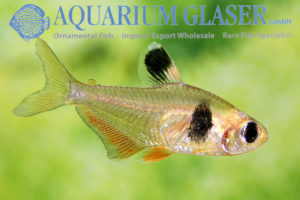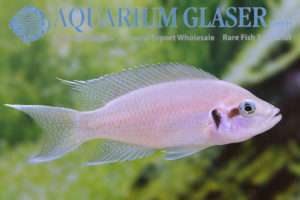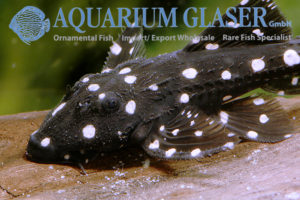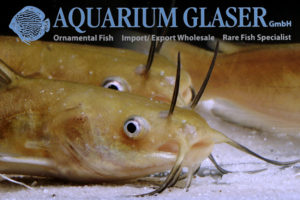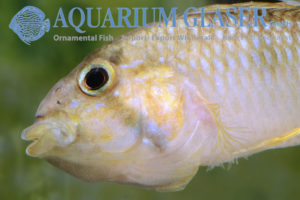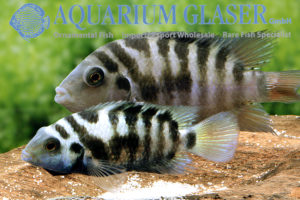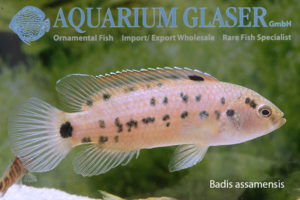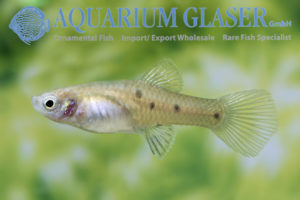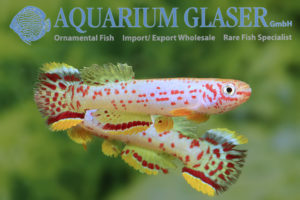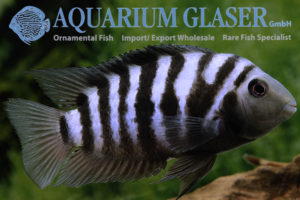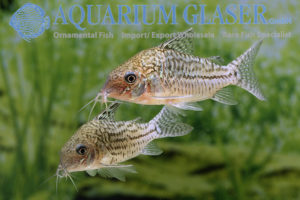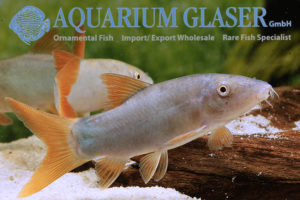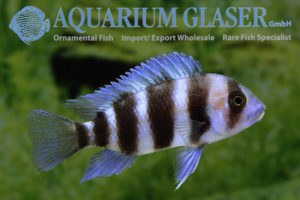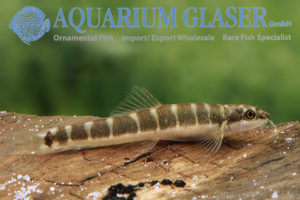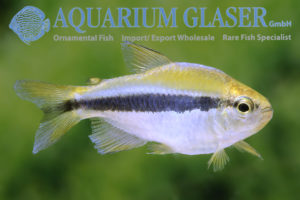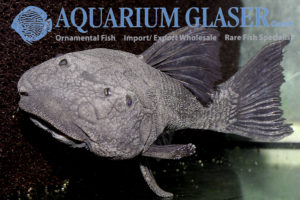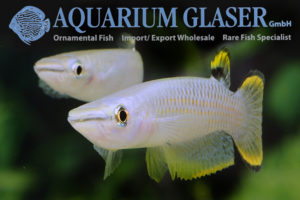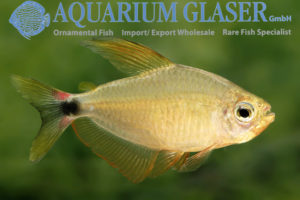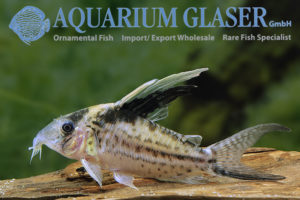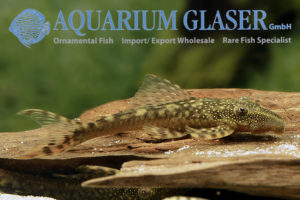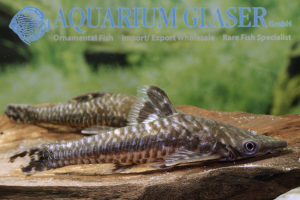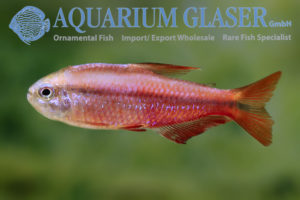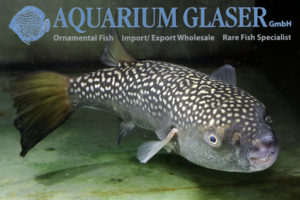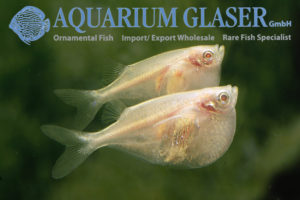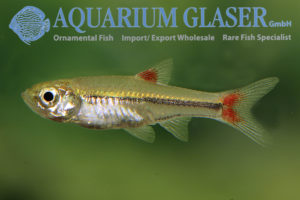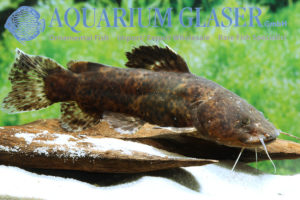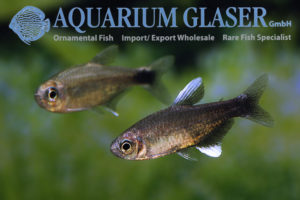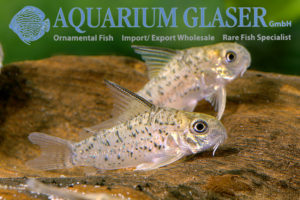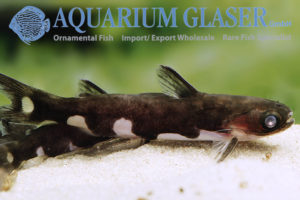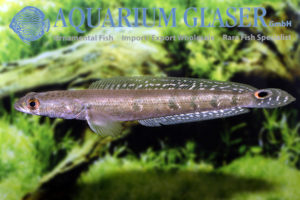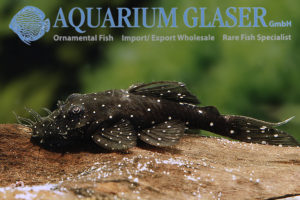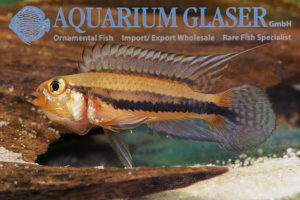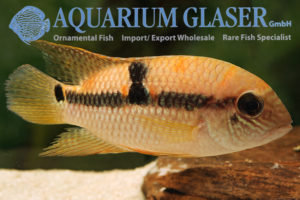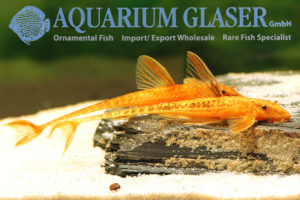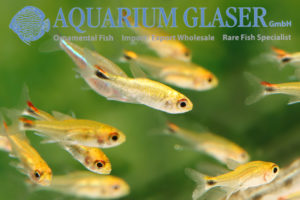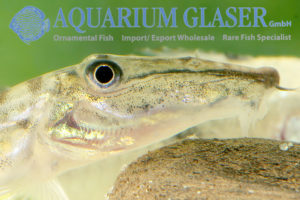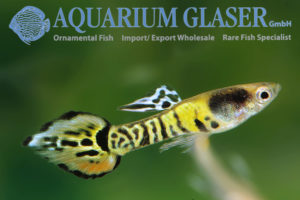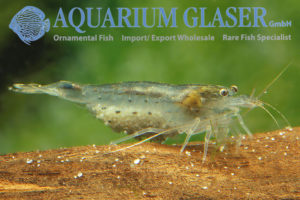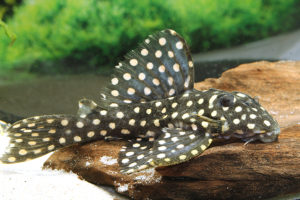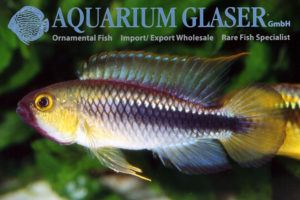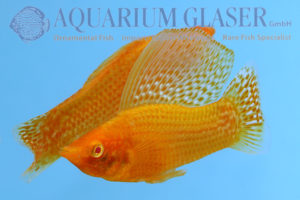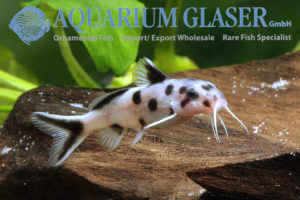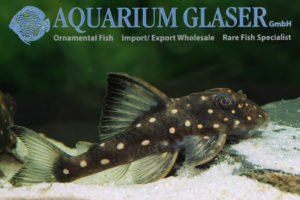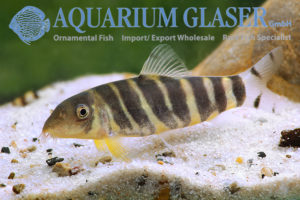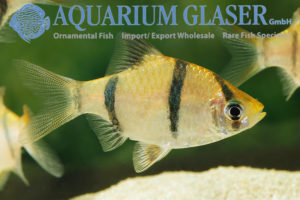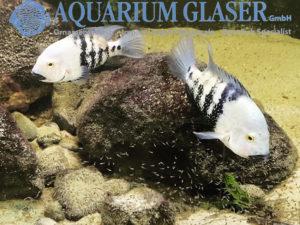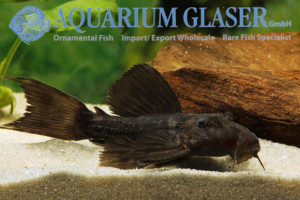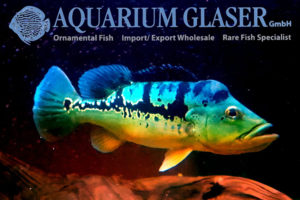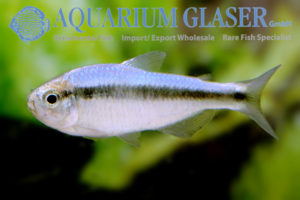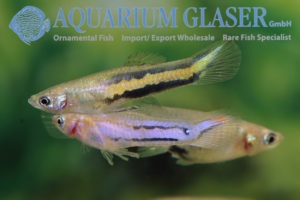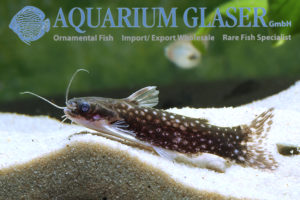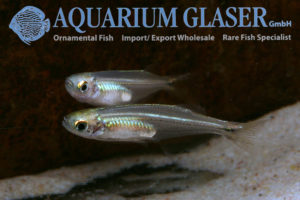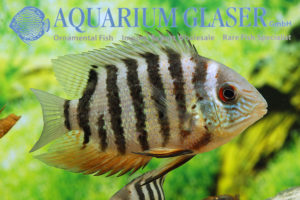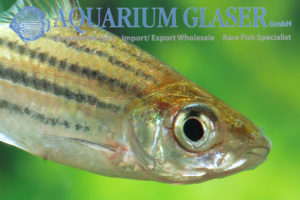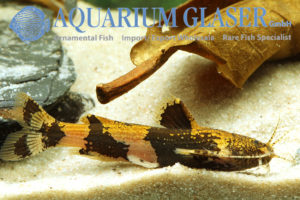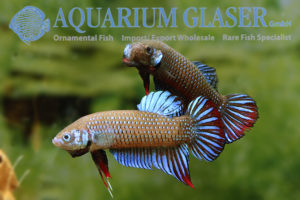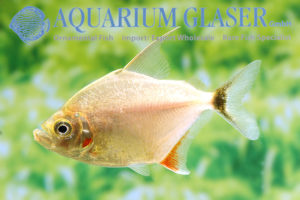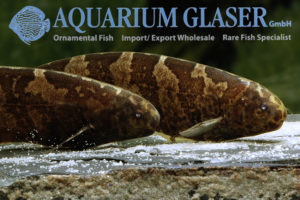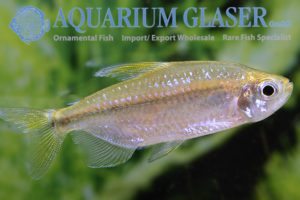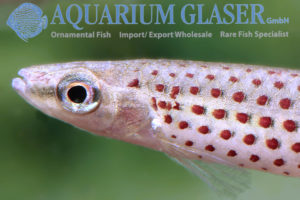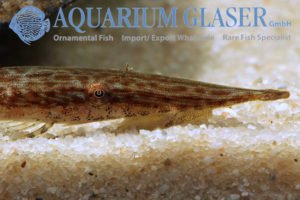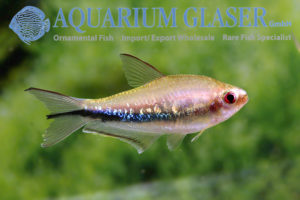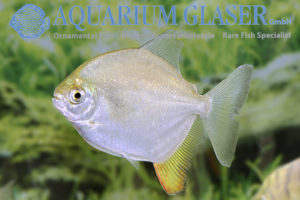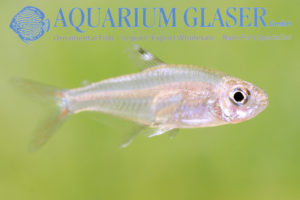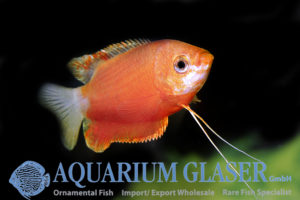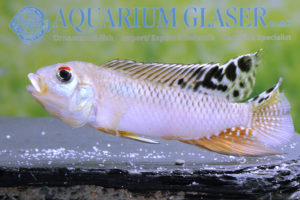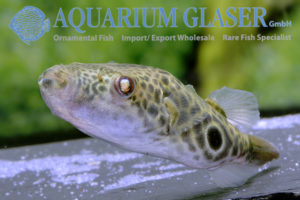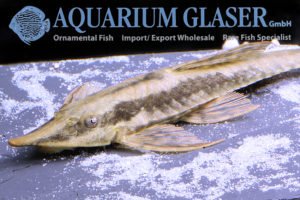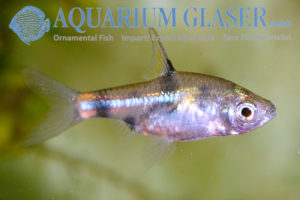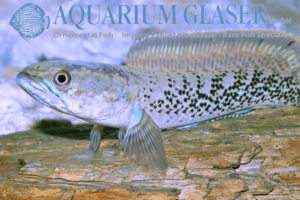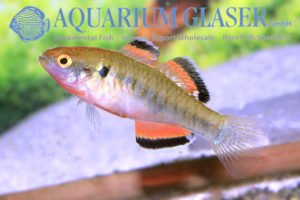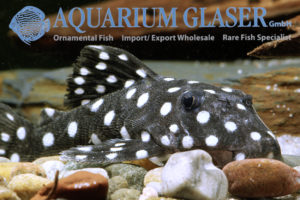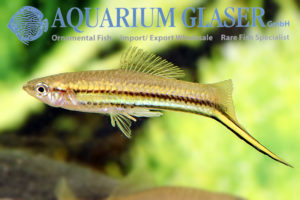The checkerboard cichlid (Dicrossus filamentosus) is the most typical dwarf cichlid in the habitat of the cardinal tetra (Paracheirodon axelrodi). It is found in Brazil (Rio Negro drainage) as well as in Colombia and Venezuela (Orinoco drainage). Males have a lyre-shaped caudal fin and grow to almost 8 cm long; the caudal fin of females […]
Fish Archive (2977)
-
-
Xenotoca doadrioi
In the past, this particularly pretty goodeid (Xenotoca doadrioi) was known as “Xentotoca eiseni San Marcos”. Unfortunately, the species, which was only “officially” described as a distinct species in 2016, is highly endangered. More than 50% of the originally known populations have already disappeared, with the rest showing a steady downward trend. The causes are […]
-
Oxydoras niger
With a maximum length of 1 meter Oxydoras niger belongs to the largest species of thorny catfishes. Nevertheless it is a very peaceful species and therefore quite attractive for owners of very large aquariums, show aquariums and zoos. Fully grown these fishes are uniformly black (this is exactly what the species name “niger” = black […]
-
Corydoras pulcher
The species name pulcher means “the beautiful one”. And that actually says it all. We can currently offer this really beautiful armored catfish, which, along with a whole range of species with which it can easily be confused, comes from the Rio Purus drainage in Brazil. Corydoras pulcher grows to about 6-7 cm in length. […]
-
Nannostomus sp “Super Red“
Since a few weeks pictures of bright red Nannostomus are circulating, which seem to be unnaturally colorful. However, these are actually wild forms from Peru, which are very close to or even identical with the Nannostomus rubrocaudatus (the “Purple”), which is also found there. Like the latter, the novelties have a prominent black spot in […]
-
Hyphessobrycon micropterus
Again we succeeded in importing the unfortunately very rarely offered, very attractive Hyphessobrycon micropterus from the Rio Sao Francisco in Brazil. For more information please see: https://www.aquariumglaser.de/en/fish-archives/hyphessobrycon-micropterus-2/ The pictures in this post show animals from our current stock (June 2022). For our customers: the animals have code 261853 on our stock list. Please note that […]
-
Leporinus sp. “Strawberry” Bred
So far we could import this probably most beautiful of all Leporinus only once: Leporinus sp. “Strawberry”. That was in the season 2010/2011, in which we managed two imports in small numbers. For these fishes please see https://www.aquariumglaser.de/en/fish-archives/leporinus_sp_strawberry__en/ An interesting side note: five of the fishes imported at that time we got back in top […]
-
Hyphessobrycon socolofi var. Green
Only rather rarely – every few years – and if, then always in the summer months June-July-August, we receive Hyphessobrycon socolofi from Brazil, in which the back shines conspicuously green; besides, the second cherry-red spot on the tail root is colored particularly intensively red with these animals. We have been observing this phenomenon for many […]
-
Corydoras armatus
In the last years we reported more often about Corydoras imports, which are similar to Corydoras armatus (= sp. aff. armatus or cf. armatus), but not identical. Now we received again the “real” C. armatus from Peru. The enormously high dorsal fin is really an eye-catcher. In addition it is always carried tautly upright, which […]
-
Pao abei (formerly Tetraodon abei)
This beautiful and – by Pao standards – peaceful freshwater pufferfish originates from the Mekong River basin in Laos (type locality: the Xe Bangfai River near Ban Geng Sahwang); it is considered endemic (= only occurring there) in the Xe Bangfai. In contrast to Pao turgidus, which occurs in the same river, P. abei has […]
-
Platysilurus mucosus
Predatory catfishes exude a special fascination to many a catfish lover. Unfortunately, many species simply become too large for permanent care in a normal sized home aquarium. However, there are also species that grow to only 20-30 cm in length and for which it is therefore not necessary to flood the entire basement to meet […]
-
Pterophyllum sp. “Guyana Red Dragon”.
Similar to the fact that there are several red-backed angelfish populations, there are also several red or yellow-spotted wild forms. The ancestors of Pterophyllum sp. “Guyana Red Dragon” came from the Essequibo River in Guyana. Number and intensity of dots vary individually in each fish, but all specimens we currently received (they are now 5-7 […]
-
Pterophyllum “Manacapuru redback”.
There is a lot of interest in special wild forms of the angelfish. Among the best known is the “Manacapuru Redback”, a very striking form. Because of the strong need for revision of the genus Pterophyllum, it is better not to call it “Pterophyllum scalare” scientifically, because what exactly this “real” scalare is has yet […]
-
Julidochromis marlieri
The julies (Julidochromis) belong to the most popular cichlids from Lake Tanganyika. They are very beautiful, colorful and comparatively peaceful animals. Of course, for reproduction territories are formed and defended against other fish. All Julidochromis are recommendable aquarium fish, there is a suitable species for every aquarium. The largest is J. marlieri, of which we […]
-
Hyphessobrycon sp. aff. bifasciatus “Ghost” and H. bifasciatus “Red Fin” wild
For the first time we can offer this interesting and attractive tetra novelty: Hyphessobrycon sp. aff. bifasciatus “Ghost”. The origin of this fish is not known to us. Our breeder received the parents from Vienna. When the young fish obtained with them developed strong red fins, which they lost again when growing up, the close […]
-
Tyttocharax cochui
Finally we were able to import once more one of the most charming dwarf tetras at all: Tyttocharax cochui. These very lively and absolutely peaceful blue flashes become only 1.5-2 cm long. The story how T. cochui was discovered is quite interesting.They were imported for the first time in April 1949 to Germany – as […]
-
Nothobranchius patrizii
The nothobranchs (Nothobranchius) represents with N. furzeri one of the shortest-lived vertebrates of the world. Only the marine goby Eviota sigillata tops it, with it (in nature) never an animal became older than 59 days. In the case of N. furzeri, the time between hatching from the egg and death from old age is also […]
-
Oryzias woworae
The Blue Daisy (Oryzias woworae) is known by almost every aquarist child and we have this beautiful and easy to care fish regularly in our offer. Our current stock, offspring from Indonesia, consists of particularly large animals, which color themselves splendidly almost black in the courtship display. Apparently one has successfully crossed the attractive “Black” […]
-
Dario tigris – the “Black Tiger” was scientifically described
The cute Flame Red Dwarf Badis (Dario hysginon) we have quite regularly in our stock. It originates from Burma (drainage of the Irrawaddy, Myitkyina District, Kachin State). More pictures of the species can be found here: https://www.aquariumglaser.de/fischarchiv/dario_hyginon_2__en/ Partly together with the Flame Red another dwarf badis occurs in nature, which is already mentioned in the […]
-
Botia kubotai
Some botias, among them B. kubotai, are available only seasonal and for a quite short time per year. The very beautiful species B. kubotai originates from the Salween-tributary Ataran in the border region between Burma and Thailand. It becomes around 8-10 cm long, maximum length reported so far is 13 cm. This species is one […]
-
Glyptoperichthys parnaibae
For the first time ever we can offer Glyptoperichthys parnaibae, so far known exclusively from the Rio Parnaiba in Brazil. The Rio Parnaiba is located in the northeast of Brazil and has a high proportion of endemic, i.e. only there occurring fish species, because there is no connection to other river systems. The juveniles of […]
-
Macrognathus maculatus
Spiny eels enjoy an increasing popularity. More and more aquarists are discovering that it is not always the colorful, constantly visible fish that are fun to watch, but also the more hidden fish personalities that are often only seen when feeding. Among these fish personalities are definitely the spiny eels. There are spiny eels in […]
-
Apistogramma agassizii Peru wild
The dwarf cichlid Apistogramma agassizii has a distribution area that extends through practically the entire Amazon. With many of its genus comrades it is completely different, they often occur only locally and form then also location variants. Agassiz’ dwarf cichlid has so far successfully resisted all attempts to divide it. It is true that some […]
-
Platydoras armatulus
The snarling zebra catfish – this is how Platydoras armatulus could be popularly called. However, it is actually called the striped raphael catfish. All spiny catfish can make distinct growling or croaking sounds when taken out of the water. They vibrate their whole body. Presumably this serves as a defense against enemies. But even without […]
-
Corydoras sp. CW 51
The “New Pandas” from Colombia belong to the most attractive and at the same time easy to keep and breed corydoras of the last years. There are two forms/species, CW 49 and CW 51, which differ clearly in the shape of the black saddle spot. For CW 49 please see here: https://www.facebook.com/page/119893808211837/search/?q=cw49, for origin etc. […]
-
L129 var Hypancistrus debilittera
The small remaining, nicely marked Hypancistrus debilittera from the Rio Bita (a tributary to the Rio Meta, Colombia, Orinoco drainage) enjoys a great popularity since years. Already with 7 cm length the males become sexually active, the maximum length is given with about 12 cm. We import this species regularly. Recently we received a “Hypancistrus […]
-
Triportheus rotundatus
The strange narrow hatchetfish of the genus Triportheus belong to the flying fishes of freshwater. This is already indicated by the mighty pectoral keel with the muscles attached to it and the very long pectoral fins. The fish are predominantly silvery colored and grow to about 15 cm in length, which is why they are […]
-
Hyphessobrycon takasei
The Coffee Bean Tetra is an exceptional species within the so-called Rosy Tetras: no other species has even a hint of such a large shoulder spot. The distribution area of the species is in the lower Amazon basin, the border area between Brazil and French Guyana. There you can find the Coffee Bean Tetra in […]
-
Neolamprologus pulcher (= N. brichardi)
Whoever coined the name “Princess of Burundi” for this beautiful small cichlid: it is a brilliant name! The fish commonly known as Neolamprologus brichardi is by no means found only in Burundi, but is distributed in numerous color variants in Lake Tanganyika, which led to several scientific descriptions: Lamprologus savoryi pulcher, L. olivaceus, L. elongatus […]
-
Acanthicus adonis
Now it is season again for one of the most beautiful of all loricariid catfishes: Acanthicus adonis. The species name “adonis”, which is reminiscent of the ancient god of beauty and vegetation, Adonis, is aptly chosen. For like the god described as a beautiful youth, the Adonis catfish is such a beauty only when young. […]
-
Ameiurus melas
Among the aquarium fishes that have been kept already in the 1890ies belong the two species of bullhead catfish Ameiurus melas and A. nebulosus. Both species are very similar to each other and even specialists have problems to tell them apart. Initially bullhead catfish were brought to Europe as foodfish in the 1880ies from the […]
-
Apistogramma barlowi (= sp. mouthbrooder)
The first reports about the brood care behavior of this dwarf cichlid in the early 2000s were a sensation. Mouthbrooding Apistogramma – one had never heard of it before. Later it turned out that things are complicated. Some of the females of A. barlowi, as this species is now called, show quite normal Apistogramma brood […]
-
Amatitlania siquia (= sp. Honduras Redpoint)
The taxonomic status of this small cichlid, which has had quite a respectable aquaristic career as Amatitlania sp. Honduras Redpoint, is controversial. It is currently assumed that it belongs to the species scientifically described as A. siquia. Now this species is itself controversial and is seen by some scientists as a synonym to the old […]
-
Badis assamensis and Badis blosyrus
In the north of India there are two Badis species, which are indistinguishable by color: B. blosyrus and B. assamensis. The only discernible difference that exists is the size of the mouth cleft. It is much larger in B. blosyrus and reaches below the center of the eye margin, whereas in B. assamensis the mouth […]
-
Phallichthys quadripunctatus
Unfortunately only very rarely we can offer this cute dwarf livebearer from Costa Rica. The males grow to a length of about 1.5 cm, the females to a maximum of twice this size. The species name “quadrimaculatus” refers to the typically four spots these fish have on their flanks. However, many variations also occur in […]
-
Fundulopanchax scheeli
Within the genus Fundulopanchax, which was established already in 1924, but then was seen as a synonym to Aphyosemion for a very long time, there are very large species, like F. sjostedti, which can reach 12 cm (see https://www.aquariumglaser.de/en/fish-archives/fundulopanchax_sjostedti_usa_blue_en/), but also many small species, which do not grow longer than 6 cm. Among the latter […]
-
Amatitlania nigrofasciata
Are you in a phase of the hobby, in which nothing at all wants to work out concerning breeding? Then it is time for the emergency rescuer in all situations, the convict cichlid Amatitlania nigrofasciata. Although it is no longer available everywhere and at any time, especially in its natural form, it hardly ever disappoints […]
-
Corydoras sodalis Colombia
Widespread species often show coloration differences in the different parts of the distribution area. So also the beautiful Corydoras sodalis, which is reported from Peru, Brazil and Colombia. From Colombia we could now import C. sodalis, which differ quite clearly in color and figure from e.g. animals imported from Brazil (see https://www.aquariumglaser.de/en/fish-archives/corydoras-sodalis-2/). For our customers: […]
-
Yasuhikotakia modesta (2)
One of the most beautiful and largest botias besides the well known and popular Chromobotia macracanthus is the Redtail botia Yasuhikotakia (formerly: Botia) modesta from Southeast Asia. These are gorgeous fish, usually with a very unusual dove blue base coloration that contrasts very nicely with the red fins. But there are also green, yellow-finned variants […]
-
Cyphotilapia frontosa
The humpheaded Frontosa (Cyphotilapia frontosa) from Lake Tanganyika has enjoyed great popularity for decades, although (or: because!) the species belongs to the bull class among the cichlids. Old males, which look downright bizarre with their forehead hump, can grow 30 cm long. Females generally remain smaller. In addition, C. frontosa is a crepuscular predator that […]
-
Schistura savona
What the Corydoras are in South America, the Schistura loaches are in Asia. In hundreds of species they populate practically every stream and smaller river of the tropical and subtropical regions of the continent. In many cases, identification is difficult or impossible. Not so with Schistura savona from India. Its “half band” pattern with white […]
-
Hyphessobrycon cyanotaenia – extra pretty wild catches
The tetra Hyphessobrycon cyanotaenia was originally imported as “Lapis-Tetra” from Brazil; that was more than 20 years ago (see https://www.aquariumglaser.de/en/?s=cyanotaenia). Since the breeding was successful this beautiful and easy to keep fish is now a common sight in the trade. The origin was mysterious for a long time, because the scientific description was based on […]
-
Rhinelepis cf. strigosa
The two species of the genus Rhinelepis – R. aspera and R. strigosa – belong with over 60 cm attainable final size to the largest armored catfishes at all and are therefore predestined as show objects in zoos, public aquariums and of course also for owners of gigantic private aquariums. Color-wise they have nothing to […]
-
Aplocheilus panchax
Because of the still bad flight connections imports from India come in only sporadically. Now once again an import worked out. It contained among others the common panchax, Aplocheilus panchax. A. panchax is the most common fish in large parts of India and can be found literally everywhere, from the smallest puddle to the shores […]
-
Hyphessobrycon procyon
One of the still very expensive tetra novelties in the aquarium is the very, very pretty Hyphessobrycon procyon from the Rio Aripuanã in the middle basin of the Rio Madeira. It looks confusingly similar to the kitty tetra, H. heliacus, at first glance. H. procyon and H. heliacus form a species complex together with the […]
-
Corydoras robustus
This Corydoras belongs with 9-11 cm of total-length to the biggest and most splendid species of the genus at all. Both sexes develop, when they are sexually active, long dorsal fins. The males can be recognized by the additional long ventral fins. At the moment we have wonderful, fully grown, well settled animals in stock. […]
-
L92/L194 Lasiancistrus tentaculatus
There seems to be a consensus among armored catfish enthusiasts that L92, which is very widespread in the Orinoco drainage of Colombia and Venezuela and later received another L-number, namely L194, is identical to Lasiancistrus tentaculatus, which was described in 2005. However, L. tentaculatus is described as more or less monochromatic brown, while L92 is […]
-
Hypoptopoma sp. Ucayali
From Peru we could import very nice Hypoptopoma. Most of the import consisted of H. gulare (see https://www.aquariumglaser.de/fischarchiv/hypoptopoma-gulare/), but there were some specimens with very conspicuous, broad bands in the dorsal fin and contrasting caudal fins. Unfortunately the identification attempt based on the current revision of the genus (Aquino & Schaefer, 2010) did not give […]
-
Hyphessobrycon notidanos “Red Devil
Hyphessobrycon notidanos from the upper drainage of the Rio Tapajós in Brazil, which was scientifically described only in 2006, is apparently a quite multicolored animal. So there is the “Red Devil” with much red in the body and blue iris and the “Yellow Devil” with red iris. Both color forms are said to occur together […]
-
Chelonodontops bengalensis
Large puffer fish are always a cause for joy among our staff. The animals are not only beautiful, but they communicate with the keeper and the hall visitors. Their eyes are always in lively motion and it is difficult to avoid the impression that the fish in the aquarium looks at the person outside the […]
-
Gasteropelecus sternicla Albino
Hatchetfishes are normally wild caught. They are very common, easy to transport and therefore a welcome addition to the sustainable ornamental fish fishery in Venezuela, Colombia, Peru and Brazil. This is also true for the “Common” Hatchetfish, Gasteropelecus sternicla. For general information on the species, please also see https://www.aquariumglaser.de/fischarchiv/ein-grosser-klassiker-gasteropelecus-sternicla/. For some years now, offspring of […]
-
Rasbora rubrodorsalis
From Thailand we just received once again the dwarfish brilliant redfin rasbora, Rasbora rubrodorsalis. This species was recognized as a distinct species only late, in 1997, although it is widely distributed in Southeast Asia (Laos, Cambodia, Thailand, Vietnam). It was formerly thought to be a juvenile form of the similar species Rasbora borapetensis. Unlike R. […]
-
Batrochoglanis sp. Venezuela
Something is happening with the South American bumblebee and frog catfishes! In former times they were assigned to the long-whiskered catfishes (Pimelodidae), today they are placed in an own family, the Pseudopimelodidae. Often in the trade are the striking yellow-black marked, only 3-8 cm large South American bumblebee catfishes (Microglanis, 23 species), and the similarly […]
-
Hyphessobrycon negodagua
At present the small tetras of South America experience a new boom. Numerous species have been and are being described scientifically. Thus also the ornamental fish collectors leave their beaten tracks and look for these animals, particularly since currently peppered prices are paid for the novelties. Naturally, such a thing only works for a short […]
-
Corydoras sp. “Ogawae” CW86 (cf. armatus)
Corydoras armatus is a rather distinctive cory from Peru. We have also received this beautiful species, which is notable for its particularly high dorsal fin, from Venezuela from time to time (see https://www.aquariumglaser.de/fischarchiv/corydoras_armatus_venezuela_de/). Geographically this all fits together well, the catching regions both belong to the upper drainage of the Amazon. However, there is a […]
-
Tatia musaica/ Centromochlus musaicus
When the first black and white “Tatia” appeared in the ornamental fish trade some years ago, they were celebrated as a sensation. (see https://www.aquariumglaser.de/en/fish-archives/centromochlus_sp_ninja_en/ and https://www.aquariumglaser.de/en/fish-archives/tatia_musaica_en/). We identified these fish, which originated in Brazil, as Tatia musaica. In 2017, a team of scientists published a study on Centromochlus species and described the species previously known […]
-
Channa marulioides
The largest and most splendid of all snakeheads belong to the relationship of Channa marulius. This species occurs in India and attains a maximum length of about 120 cm. The largest specimen ever collected is said to have had a length of 183 cm and a weight of 30 kg. But most often the fish […]
-
Ancistrus sp. L184 (= L107)
One of the most attractive Ancistrus species is this so far not scientifically identified species from the middle Rio Negro in Brazil. There the beautiful fish is not rare, in some places even very common, but the species apparently prefers biotopes which are avoided by the local fishermen; otherwise it can hardly be explained why […]
-
Apistogramma diplotaenia German bred
The double stripe (= the translation of the word diplotaenia) is still a rare occurrence in the aquarium. For successful breeding you have to reach pretty deep into the bag of tricks of water chemistry and the animals are also relatively unproductive. This unusual Apistogramma species originates from the black water of the Rio Negro, […]
-
Aequidens superomaculatum
For the first time we were able to import a beautiful Aequidens from Venezuela, which is probably Ae. superomaculatum. This species has been described scientifically only a few years ago – in 2015. Unique in the genus and also giving the name (superomaculatum = with a spot above) is the combination of a continuous lateral […]
-
Rineloricaria lanceolata “Red Dun“
For the first time we can offer the breeding form “Red Dun” of the Chocolate Whiptail Catfish. This new breeding form goes back to a wild-caught male that we were able to import from Paraguay in November 2015 (see https://www.aquariumglaser.de/en/fish-archives/rineloricaria_lanceolata_en/). We gave it, together with some normal females of the same import, to our breeder […]
-
Axelrodia stigmatias
This cute dwarf tetra was described in 1913 from the Rio Madeira, where it was collected near Porto Velho. It is a typical companion fish of the two neon species Paracheirodon axelrodi and P. simulans and, as we know today, occurs throughout the range of the two neons, i.e. in the upper Orinoco and the […]
-
Acantopsis dialuzona
In the last years we received horseface loaches (Acantopsis) mainly from Thailand, where the genus is represented by several species, which are difficult to distinguish. Now we have once again received specimens from Indonesia. It is A. dialuzona, the best known species of the genus by name. In older aquarium books this species can be […]
-
Guppy Endler “Bengal Tiger”
The tiger breeding forms of the Endler guppy enjoy special popularity. There are multicolour, blue and also selected for yellow body color strains. The latter is called “Bengal Tiger”. The manifestation of pure yellow animals is not easy, there is a tendency to revert to a gray-blue base coloration. But these are also very pretty […]
-
Amano shrimp now also available as German offspring
The Amano shrimp (Caridina multidentata, formerly known as C. japonica) is one of the most popular freshwater shrimp for the aquarium. It feeds on Aufwuchs, eg microorganisms and is therefore absolutely harmless to fish and plants. Instead, through its grazing activity, it frees plants and decoration from annoying algae growth or ensures that algae do […]
-
Hypancistrus contradens L201a Big Spots
From the lower Rio Ventuari in Venezuela – the largest tributary of the Orinoco – as well as from the Orinoco itself in the Ventuari estuary comes a beautiful Hypancistrus. It has large, bright spots on a deep black ground. The coloration of the spots is varying between shy white and orange-pink. There is a […]
-
Apistogramma sp. Wilhelmi
More than 20 years ago (1999) Mario Wilhelm brought back from an expedition to Brazil for the first time this beautiful dwarf cichlid from the Rio Abacaxis. An alternative name to Apistogramma sp. Wilhelmi is therefore A. sp. Abacaxis. This river, a well known area for discus fishes, belongs to the drainage of the Rio […]
-
Poecilia velifera Blood Red
The golden albino breeding form of the sailfin molly (Poecilia velifera) was created in the early 1980s. At that time it was celebrated as a sensation. Nowadays it is one of the most popular breeding forms of this molly. Particularly color-intensive golden sailfin mollies are called “Blood Red”. These animals are currently brought to the […]
-
Synodontis polli “White”
Some time ago a small Synodontis appeared in the hobby, which is called “White Polli”. But the “White” has little in common with the actual Synodontis polli. The dorsal fin spine of “White” is bicolor, black in the lower half, white in the upper half. This species is distributed in the hobby almost exclusively as […]
-
L501 Hypanacistrus sp. Mitu
Snowball plecos belong to the largest Hypancistrus species. They can reach up to 20 cm in length. Members of the group are easily recognized by the conspicuous black fringes in the dorsal and caudal fins. Distinguishing the aquaristically known form, on the other hand, is tricky and sometimes simply impossible without knowledge of the origin. […]
-
Botia dario
Now is the season for the very beautiful and relatively small remaining loach Botia dario from India. Usually the species grows to a length of 6-8 cm, as record size 15 cm are given in literature, but it is not clear if this is not a case of confusion. In India and adjacent countries the […]
-
Puntigrus tetrazona – the true tiger barb
We have now been able to import genuine tiger barbs from Central Sumatra (Jambi Province) as wild-caught specimens. When looking at the pretty and extremely lively animals, it is immediately clear that it is something other than the “aquarium tiger barb”. We are very happy that we succeeded in importing this “real” tiger barb, eg […]
-
Astatheros macracanthus (formerly: Cichlasoma m.)
There is no doubt that Astatheros macracanthus is a fish for connoisseurs. This 20-25 cm long cichlid is distributed quite widely from southern North America to Guatemala and El Salvador. The species was scientifically described already in 1864, but in the aquarium it has always remained an absolute rarity. The reason is clear: in the […]
-
Pseudacanthicus sp. L185 Bred
The cactus plecos (Pseudacanthicus) are popular with owners of large aquariums. L185 originates from the Rio Xingu and is also called Belo Monte Cactus Pleco, because this catfish used to be caught there. We do not know if the species still exists there, or if it was wiped out by the construction of the Belo […]
-
Cichla ocellaris x melaniae Hybrid
Few fish show as clearly how dynamic things can get in aquaristics as Cichla. These large cichlids are among the most popular food fish in South America, but until the turn of the millennium they were not considered very suitable for aquarium care: they were considered too large and too sensitive. In the meantime, however, […]
-
Hyphessobrycon melanostichos
At the moment we can offer magnificent, fully grown bred specimens of Hyphessobrycon melanostichos. Hyphessobrycon melanostichos is very eye-catching due to its bright sky-blue back coloration. The species was scientifically described in 2006 from the Brazilian state of Mato Grosso, where it occurs in the upper drainage of the Rio Tapajós. The species is distinguished […]
-
Micropoecilia parae German Bred
Micropoecilia parae belongs to the very few fish species, whose breeding in the aquarium over numerous generations has not succeeded so far. Basically the reproduction of the viviparous fish is not difficult, but from generation to generation the animals become smaller and smaller, until finally no further breeding is possible, because the fish die before […]
-
Tatia galaxias
The cute Tatia catfishes are quite popular in the hobby. Keepers put up with the fact that you can hardly see them outside feeding times, because they are extremely addicted to hiding. But they make up for it with their pretty coloration and good breedability. Tatia galaxias comes from the Orinoco river basin in Colombia […]
-
Denticeps clupeoides
Herring can usually only be kept in the aquarium with enormous effort; moreover, most species live in the sea. Denticeps clupeoides is a small freshwater herring, it grows to a maximum length of 15 cm, but specimens over 8 cm in length are very rarely encountered. It lives in larger shoals near the surface in […]
-
Heros sp. Curare Bred
For the first time we could import this magnificent Heros from Venezuela in 2016. The animals should originate from a Rio Curare, therefore the name; however, no Rio Curare is known to us. We suspect the Rio Ventuari as origin. The fish are extremely colorful, otherwise everything speaks for the fact that it concerns the […]
-
Striuntius lineatus
Only in very few cases is such confusion around fish names as there is around the horizontically striped barbels of Southeast Asia. The beautiful animals belong according to current opinion to two genera: the species with clearly visible, long barbels belong to the genus Desmopuntius with currently seven accepted species and the form without (or […]
-
Akysis prashadi
The range of small, peaceful catfishes from Asia is much smaller than from South America, but they do exist. Moth catfishes (Hara, Erethistes) for low flow aquariums and wasp catfishes (Akysis) for tanks with more flow are becoming increasingly popular. Akysis get their name “wasp catfish” from the most famous species, Akysis vespa, whose sting […]
-
Betta imbellis
For many Betta imbellis is the prettiest wild fighting fish at all. Of course, “the” Betta imbellis does not exist at all, because the widespread species looks somewhat different everywhere. It is the sister species to Betta splendens and in fact no human being is able to distinguish completely decolorized specimens of both species from […]
-
Catoprion mento
Finally we managed to import Wimple Piranhas (Catoprion mento) once again. In nature C. mento is a scale eater – at least at certain times. In terms of feeding, right now is a good time of year because there are plenty of live white mosquito larvae now, which are an ideal food for Wimple Piranhas. […]
-
Steatogenys duidae
From Peru we have received exceptionally nice knifefishes of the species Steatogenys duidae. According to current knowledge the genus Steatogenys comprises three species, all of which have zebra-like stripes. With a final length of about 20 cm they remain comparatively small, only S. ocellatus grows significantly larger at 30 cm. The three species are very […]
-
Phenacogrammus cf. taeniatus
A new fashion trend in the hobby is emerging: tetras from the Congo! The region was already often in the focus of the hobby, but it was about killifishes or cichlids. The large flock of silver glittering open water species was of less interest. With the discovery of the unbelievably colorful Phenacogrammus sp. “Fantastique” (in […]
-
Copella meinkeni
These beautiful tetras were called Copella nattereri in literature for many years until a scientific study found that C. nattereri is in fact the species previously known as C. nigrofasciata and that the “C. nattereri” from the Orinoco and Rio Negro belong to a scientifically unnamed species called Copella meinkeni. We regularly offer this attractive […]
-
Acestridium dichromum
The strange sucking catfishes of the genus Acestridium – there are currently seven recognized species in the genus – could also be called “dwarf needle catfishes”, because they look like a miniature version of the needle catfishes of the genus Farlowella. Unfortunately, these animals are still an aquaristic challenge, which only very experienced aquarists should […]
-
Nematobrycon lacortei
The Rainbow Emperor Tetra (Nematobrycon lacortei) is certainly one of the most attractive tetras in South America. Its home is in western Colombia where it is caught in the catchment area of the Rio San Juan. Males and females can be easily distinguished by the color of the iris. Already in small juveniles the males […]
-
Myloplus torquatus
From Venezuela we received very nice Myloplus torquatus. The up to approx. 25 cm long species is scientifically known for a very long time (since 1858) and in the course of time it was already assigned to the genera Myletes and Myleus. A very good recognition feature is the black fringe in the caudal fin, […]
-
Hyphessobrycon dorsalis
Tetras, which – as Hans-Georg Evers so aptly put it – are magnificently white wine colored, have a hard time in aquarists. In the dealer’s tank there is usually nothing to be seen of the discreet colors and why, many ask, should one buy colorless fish when there are so many colorful species? This opinion […]
-
Colisa labiosa Ruby Red
Besides the orange colored breeding form of this gourami from Burma (see https://www.aquariumglaser.de/en/fish-archives/colisa-labiosa-orange-2/) there is also a very attractive, deep red colored breeding form. In order to keep these wonderful animals in their bright coloration permanently, it is necessary to provide certain types of food (e.g. Cyclops, Spirulina or also special flake food). Without the […]
-
Nanochromis cf. teugelsi
We have received beautiful offspring specimens of this magnificent Nanochromis from the Congo. Since the experts are not yet agreed whether this species is a color variant of Nanochromis teugelsi or a different species, we have chosen the name Nanochromis cf. teugelsi. The beautiful dwarf cichlids reach a length of about 7 cm in the […]
-
Pao sp. Chao Phraya
The cockade pufferfishes are a very complex group of freshwater pufferfishes. Formerly they were called the “Tetraodon-leiurus group”, but since 2013 they are in the genus Pao. The genus name Tetraodon is now only applied to the freshwater puffers of Africa. Throughout Southeast Asia (Thailand, Laos, Cambodia, Vietnam, Malaysia, Singapore, Indonesia), Pao freshwater puffers can […]
-
The sturgeon catfishes of Paraguay: Sturisoma barbatum or S. robustum?
From Paraguay wonderful, partly very large sturgeon catfishes (Sturisoma) are imported. Two Sturisoma species are known from the Rio Paraguay: S. barbatum, described already in 1853 by Kner, and S. robustum, described in 1904 by Regan. The two species differ from each other only insignificantly. The most important anatomical feature distinguishing the two species is […]
-
Pethia gelius
The golden barb (Pethia gelius) is an aquarium old-timer that found friends even before the First World War. It is one of the smallest barb species in India. Males rarely grow longer than 2.5 cm, females slightly larger. The record of 5 cm total length, which has been haunting the literature for decades, is probably […]
-
Channa stewartii
This snakehead, often traded under the name Channa cf. barca, originates from the northern Indian province of Assam. C. stewartii can reach a length of up to 30 cm (usually around 20 cm) and as a predatory fish should only be kept along with fish that are at least 2/3 of its body length. Besides […]
-
Hypseleotris compressa
Sometimes it happens that even we run short in finding superlatives: in any case this fish deserves to create one! It is so beautiful…. H. compressa is a sleeper goby that lives free swimming in the water column. In contrast to many other gobies this fish is not a bottom dweller. In Germany the genus […]
-
Baryancistrus sp. Snowflake LDA 33 / L142
This beautiful loricariid catfish comes from the Rio Tapajós in Brazil. Usually, 4-5 cm long youngsters are imported from these catfishes, which look very attractive with their large, white dots on a deep black ground and fully deserve the name “Snowball-Pleco”. In addition to high water temperatures (not below 28°C), these catfishes should be kept […]
-
Xiphophorus hellerii “Jalapa”
When you first see this slender, splendidly colored swordtail wild form, you involuntarily think: this is no X. hellerii! And yet, when X. hellerii was first described in 1848, exactly such animals became the type specimens. The traveler of the royal imperial horticultural society Karl Heller discovered and collected the animals in clear streams of […]
- « Previous Page
- 1
- …
- 3
- 4
- 5
- 6
- 7
- …
- 30
- Next Page »





